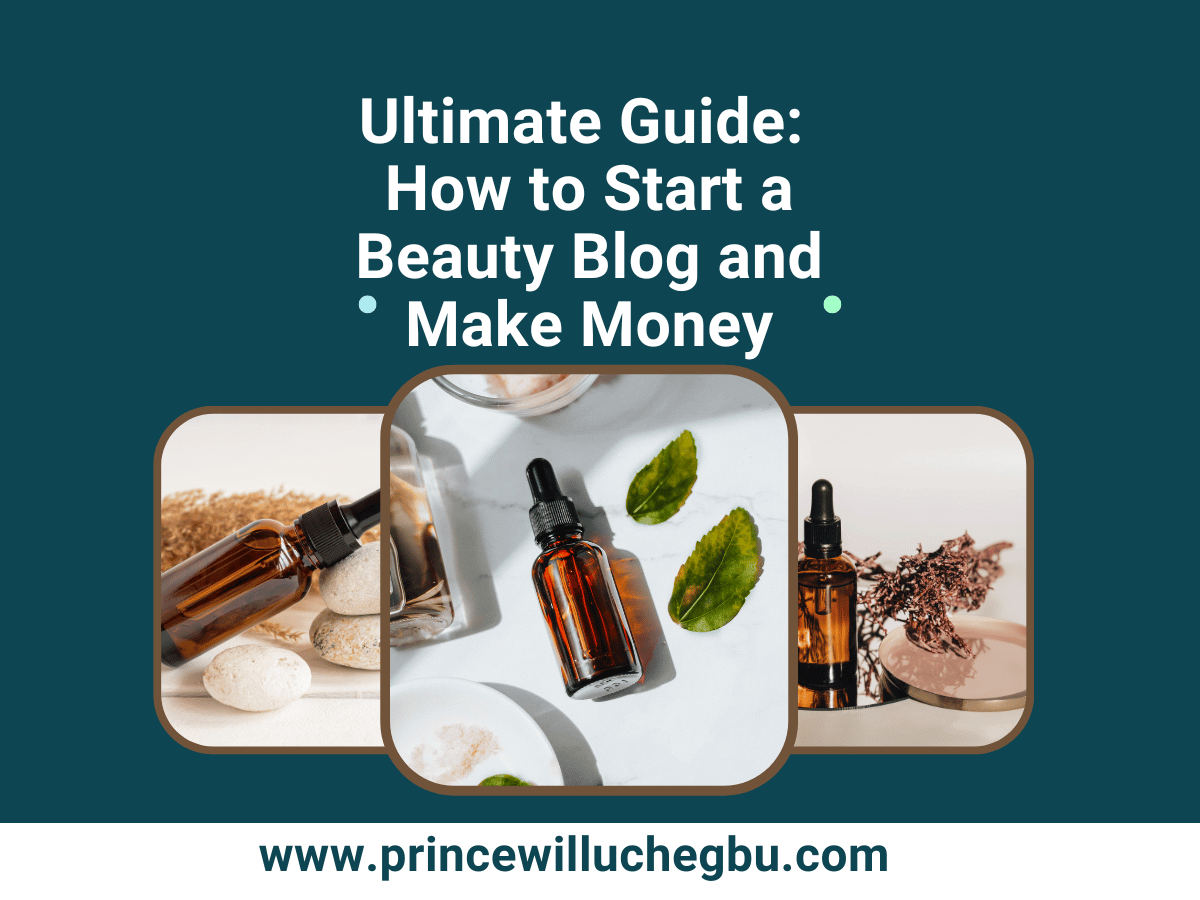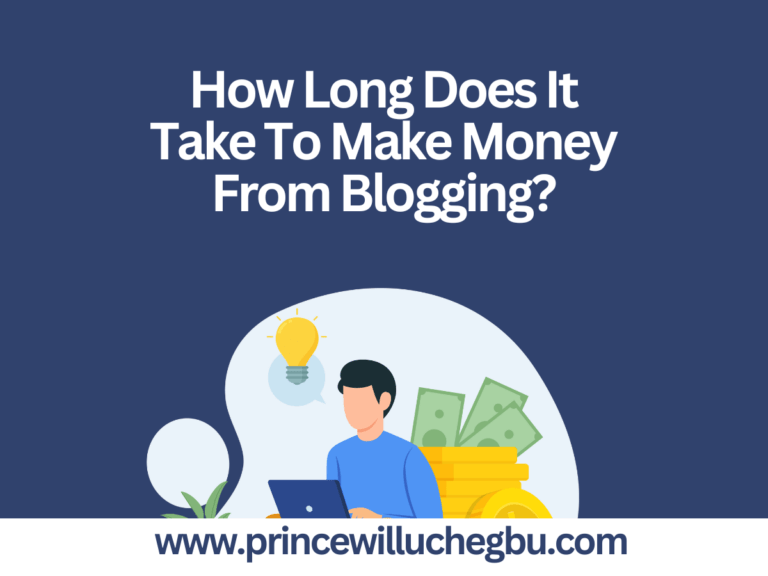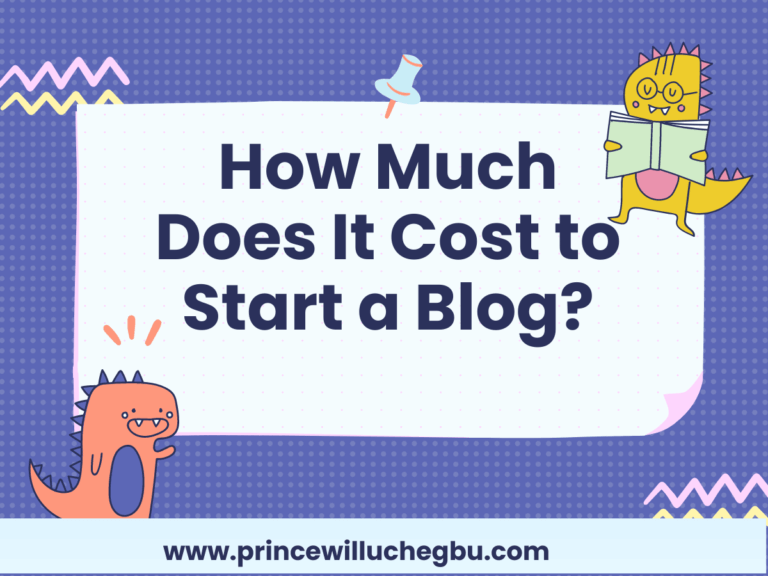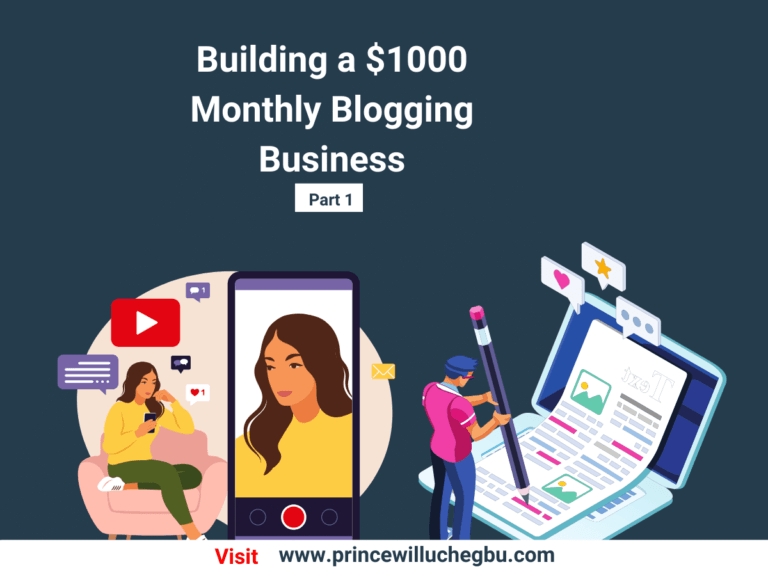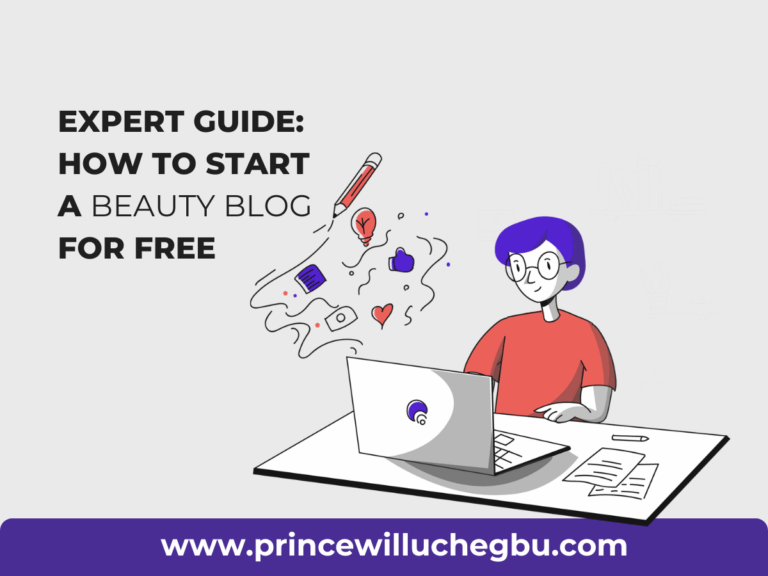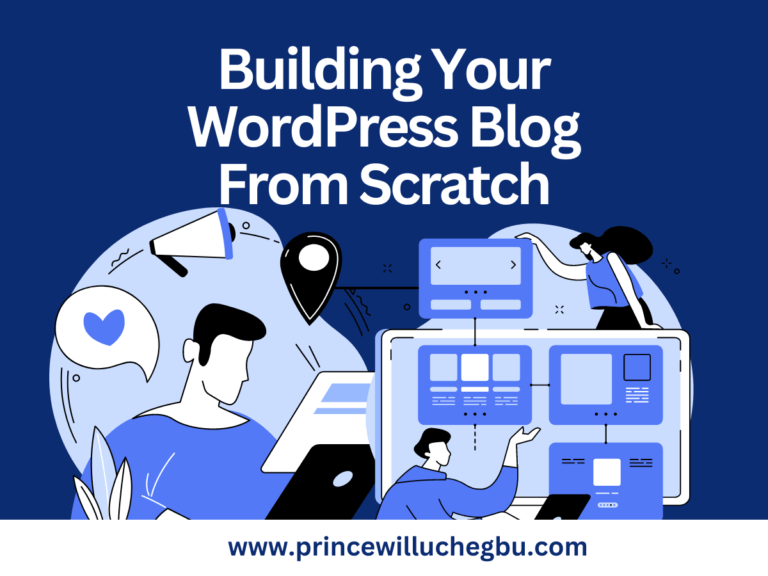How to Start a Beauty Blog in 2024
Starting a beauty blog can be a perfect idea if you work as a beauty care professional. Yes, I’m a strong fan of starting a blog in an industry you’re experienced in. Have strong passion for beauty. But even if you don’t work as a beauty care professional, with adequate research, you can still blog about the beauty niche.
One of the most beautiful things is that the beauty niche, or the beauty industry, is a very lucrative one. According to statista, the beauty industry is worth a whopping $646.2 billion in 2024 and is projected to hit $736.8 billion by 2028.
As you know, every day, men and women of different calibers are always looking for ways to enhance their beauty artistically in a naturally appealing manner.
So it is always better, if you have experience so you can talk from your place of experience and be able to meet Google’s EEAT policy. This ensures that the advice you’re dishing out consists of things that have been validated.
You don’t want to just hallucinate or regurgitate content from the Internet.
As I mentioned earlier, even if you don’t have experience, you can rely on other people’s experiences and expertises to create remarkable blog posts.
For instance, if you’re creating a blog post as someone with no experience, you can always try to interview people within who are in that industry. Go to salons, visit those places, go to offices, and talk to a beauty care professional. By doing that, you ensure that you’re producing content that is not just relevant to your audience but also usable and transformational.
With that said, what are the steps you need to ensure you start a beauty blog and make money in 2024?
Here, I’m going to share my knowledge with you about starting a blog. I’m going to share everything you need, from choosing a niche, a blogging platform—to building the blog, getting organic traffic, and making money from it. I’ll also discuss how to promote your blog to get instant eyeballs of your target audience on your content using alternative medium like email list.
How to Start a Beauty Blog in 2024
Choosing a Profitable Beauty Blog Niche
The beauty niche is a very broad niche, just like other niches. So, as a solopreneur, that is, if you’re someone who is starting out and doing this all by yourself, you might want to consider niching down. The reason is simple: you want to ensure that you’re consistently focused on doing a particular thing. You don’t want to become so stressed that you lose yourself along the way.
So, you may decide to narrow it down to a particular niche in the beauty industry.
For instance, we have the DIY beauty niche, the budget beauty niche, and the cosplay beauty niche. These are different niches you can choose to specialize in. This is also important for SEO purposes and ranking.
When choosing a niche in the beauty industry, one thing you must always consider is the popularity of the niche. You don’t want to choose a niche that nobody is interested in learning about. Because when you monetize, you can only make good money if there are a lot of people who are willing to engage with your content.
So, consider the popularity of the niche as well as your experience and expertise within that niche. Avoid choosing a niche that you have no idea about, okay? Especially if you don’t have experts you can talk to for confirmation and validation of certain information.
Choosing a Name and Domain
The next step is to choose a name and a domain name. Your domain name is simply your address on the internet, like www.princewilluchegbu.com or www.facebook.com. As a beauty blogger or someone interested in the beauty niche, choosing the right name is crucial.
Important: Best practices in choosing a DOMAIN Name.
There are some principles to keep in mind when selecting a name.
First, ensure that the name is short and conveys an idea. A short name is easier for people to remember, making it simpler for someone to recommend your blog to a friend or colleague.
Next, make sure the name is easy to spell. You want a name that anyone can easily spell without struggling to find the domain name.
Lastly, ensure the name conveys an idea related to your blog’s content. It’s advisable that your domain name hints at what your blog is about. For example, if you’re in the beauty niche, you might use a name like thebeautyblogger.com. The goal is to include the keyword “beauty” in your domain so that people can easily associate it with your content.
Registering Your Domain
Once you have chosen a name, the next step is to confirm if it’s available for registration and to choose the domain extension.
To check availability, visit any domain registrar, such as bluehost.com.
Click on “register a domain” and enter the name you’ve chosen, for example, thebeautyblogger.com.
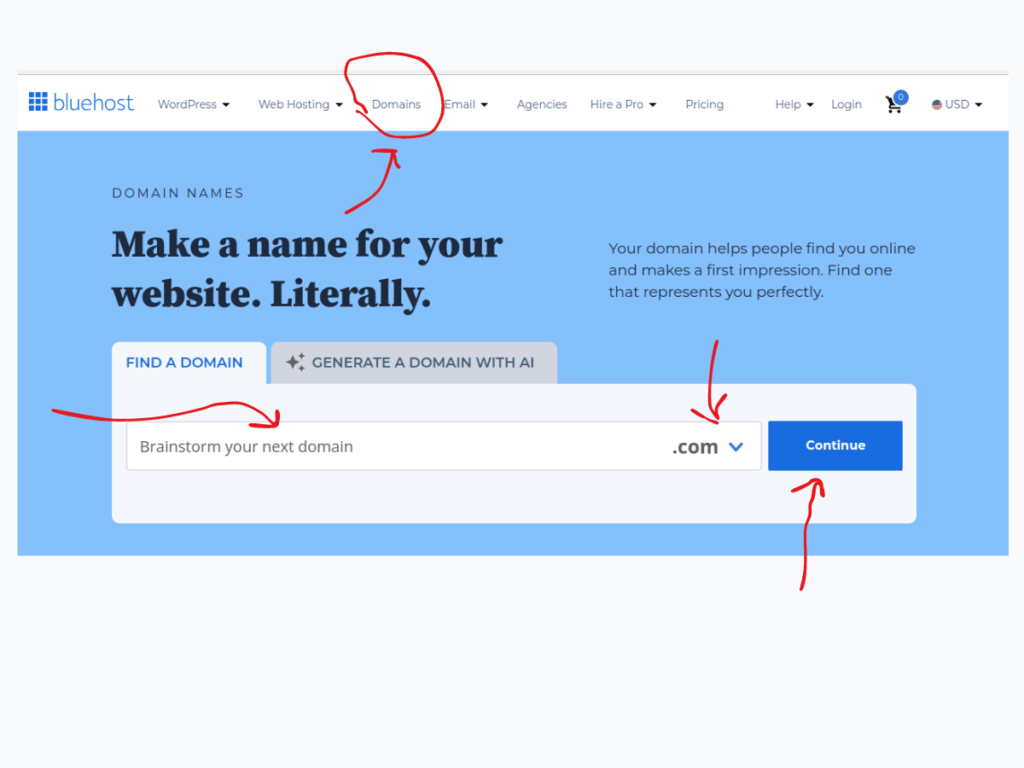
If the name isn’t available with the extension you want, consider another extension or choose a different name. You can also add a prefix or suffix to the domain name. For instance, if thebeautyblogger.com is taken, you might try mybeautyblogger.com or mybeautybloggers.com.
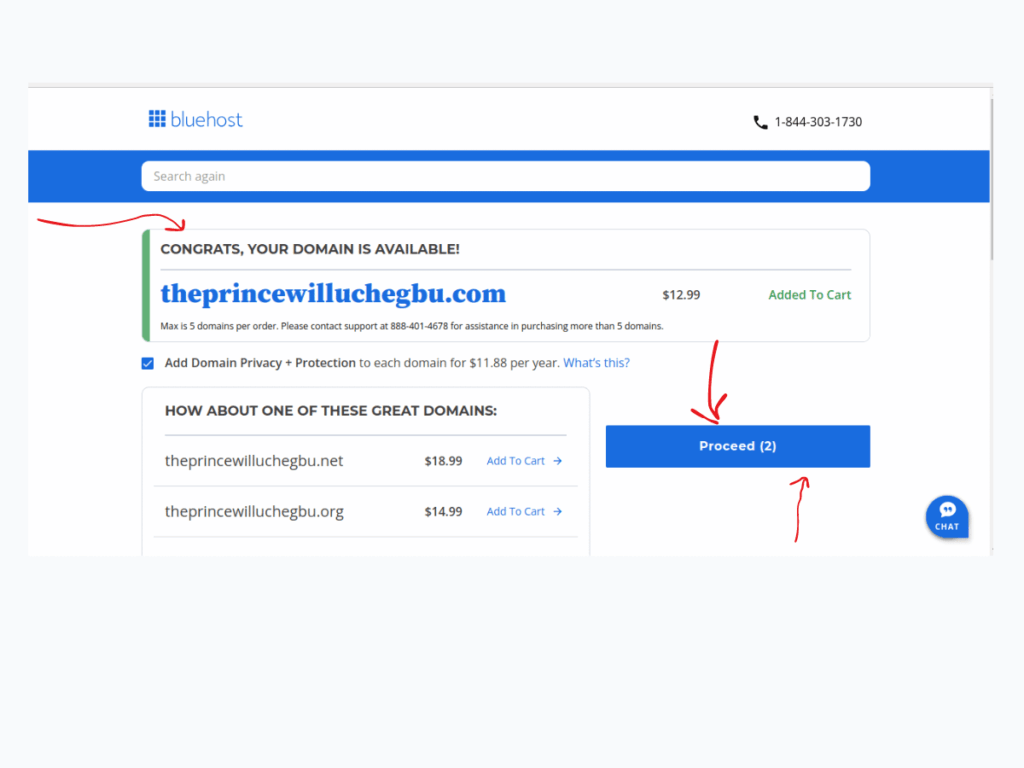
Once the domain name is available, you can move on to the next step, which is building the blog.
Choosing a Hosting Account
You also need to choose a reliable hosting account.
While your domain name is your address on the internet, the hosting account is the building that stores all your information online. Without a hosting account, your blog won’t be active on the internet. I recommend choosing a good hosting provider. I’ve also written an in-depth guide on the best hosting providers for bloggers, which you may want to check out before making your choice.
Building Your Beauty Blog
Building the site might seem a bit technical, especially if you’re not tech-savvy. Thankfully, Content Management Systems like WordPress have made it almost plug-and-play.
Alternatively, you can hire a web designer. You can also reach out to me and my team—we can design a professional blog for you at an affordable rate.
If you want to try it yourself, I’ve created a detailed step-by-step guide on building your blog using WordPress.
Or, you can follow the steps below.
Step One: Installing WordPress
Go to your hosting account’s cPanel and locate Softaculous App Installer. Then Script > WordPress.

Install WordPress on your domain.
Before clicking “Install Now.”
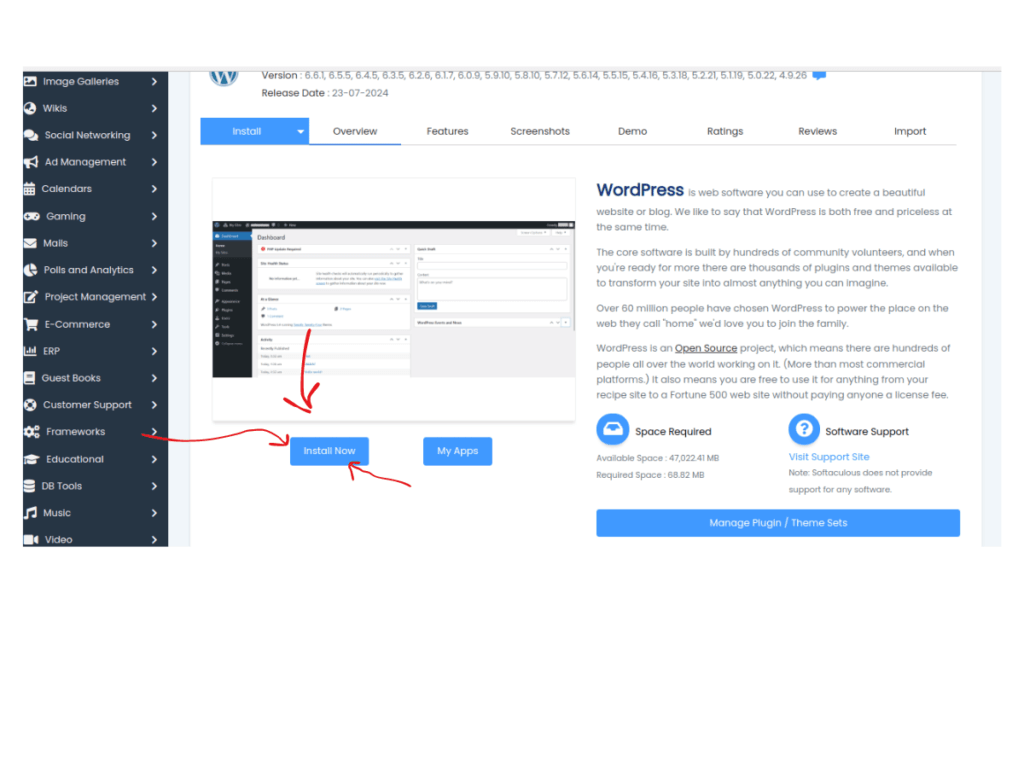
Enter your site details, including a valid email address for the installation details.
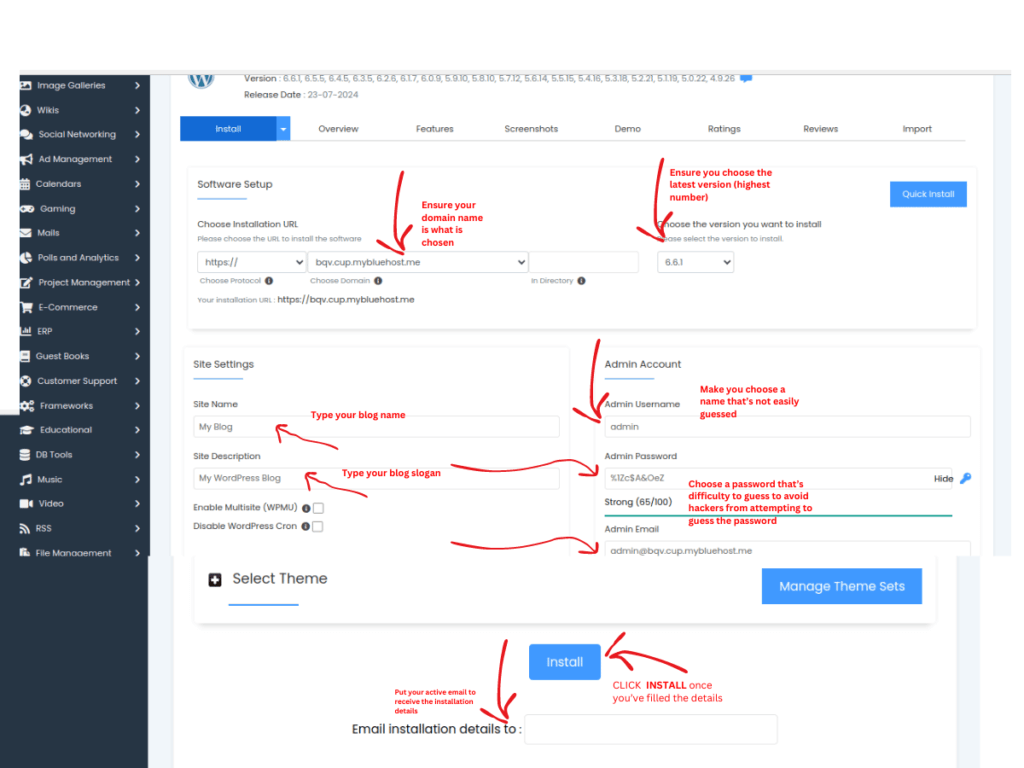
After installing, log in to your WordPress Admin Dashboard using the provided link, or go to your domain and add “/wp-admin” at the end to access the login page.
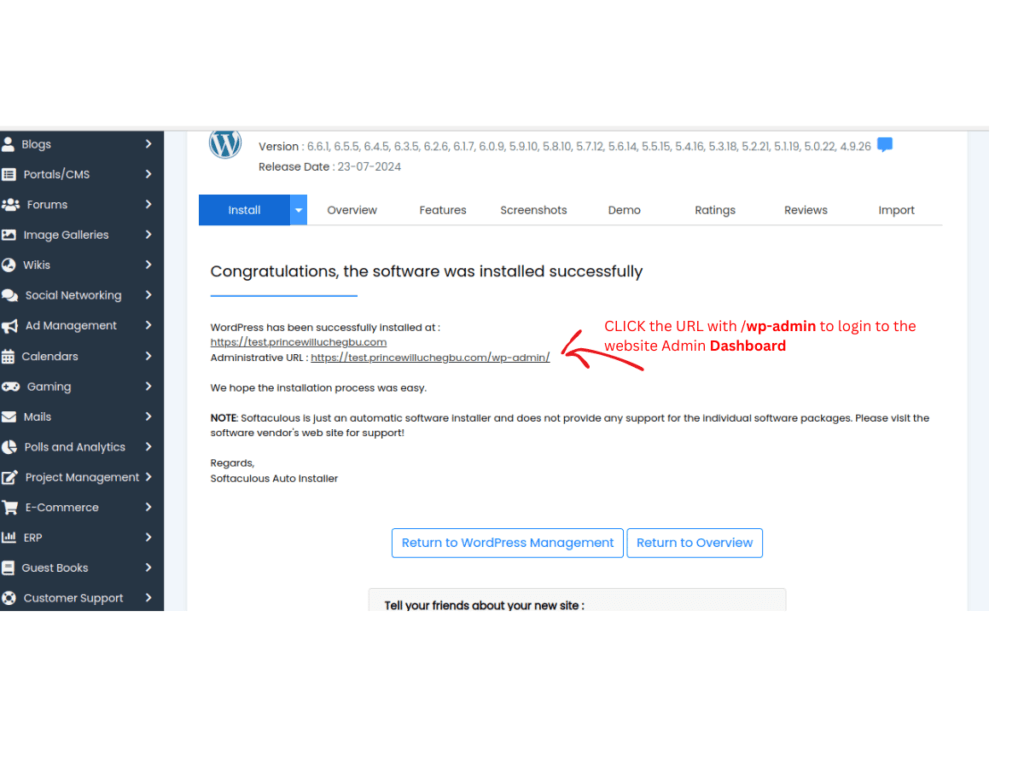
Step Two: Choose a Theme
There are thousands of themes, both free and premium, available on the WordPress theme store.
This can be confusing, especially for beginners who may not know which theme to choose.
As a beauty blogger, your theme should be beautiful, clean, responsive, and SEO-friendly, aligning with your content.
Hire Us: Let my team build your blog in just 7 days. We handle everything—from choosing the best domain name, registering it, and hosting, to creating a professional-looking blog that Google and other search engines will love. Get started now!
To simplify the process, I’ve tested and selected the best themes for you. Below are the ones I highly recommend:
- Kadence WP
- Astra WP
I also suggest opting for the premium versions to enjoy all the benefits and support from the developers.
Step Three: Customizing The Blog
Start by adding the site description and title if you didn’t do it correctly while installing WordPress script.
Go to Settings > General.
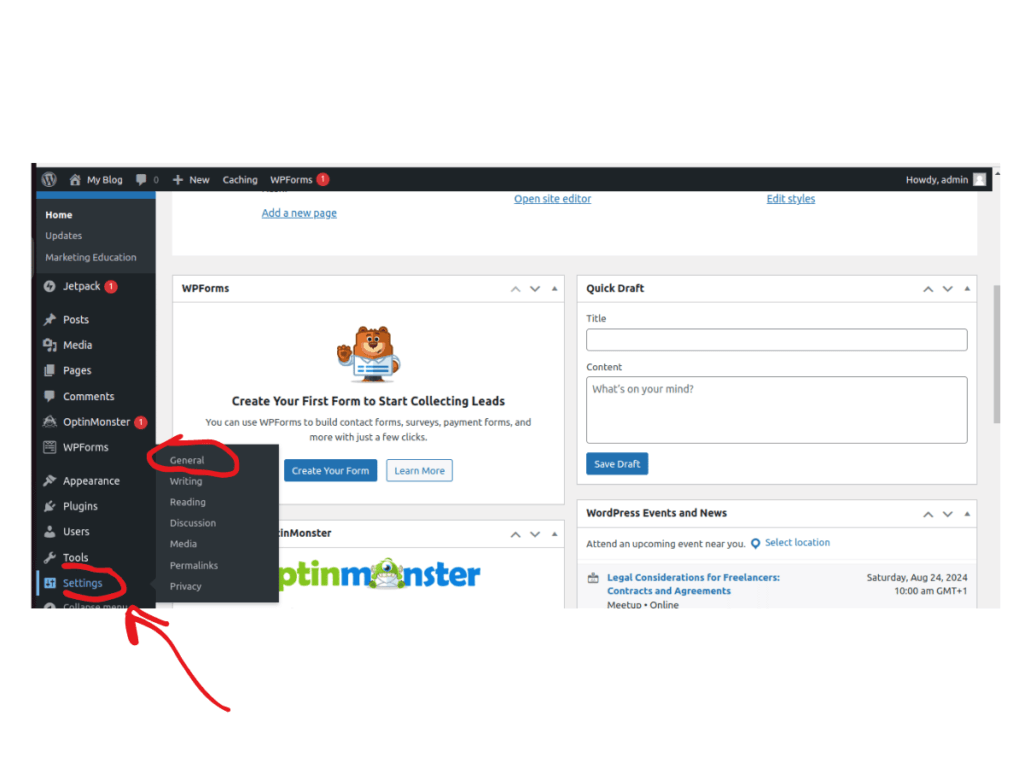
Then fill the information there.
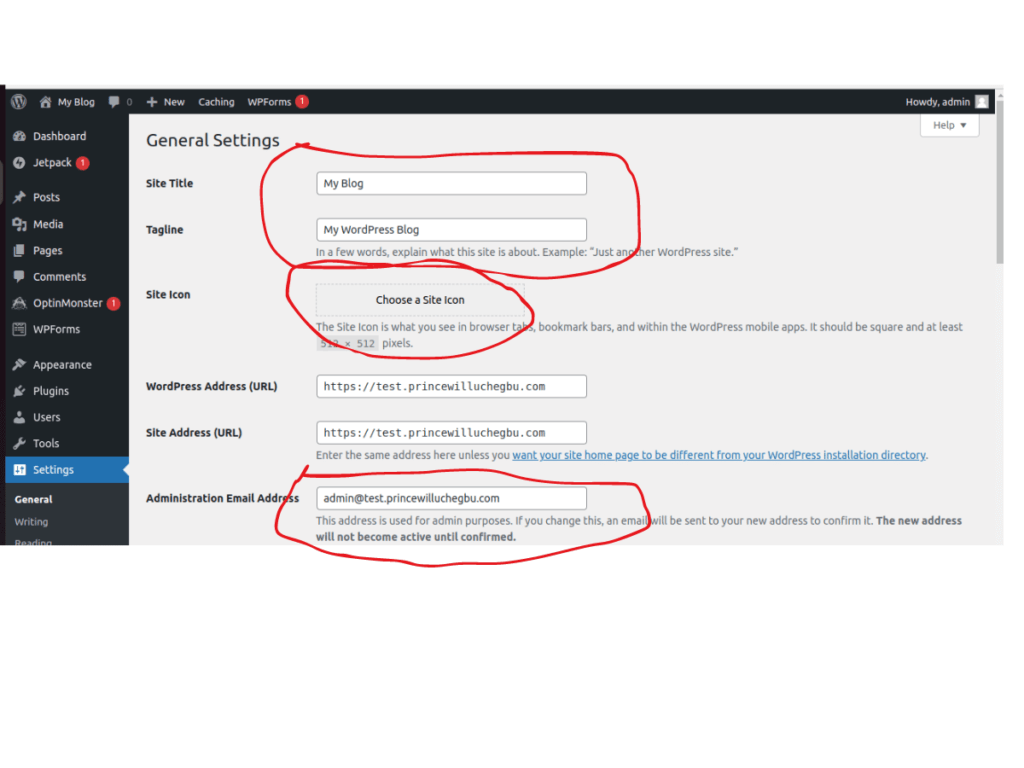
Scroll down, click “Save Changes.”
Change the Permalink.
Go to Settings > Permalink.
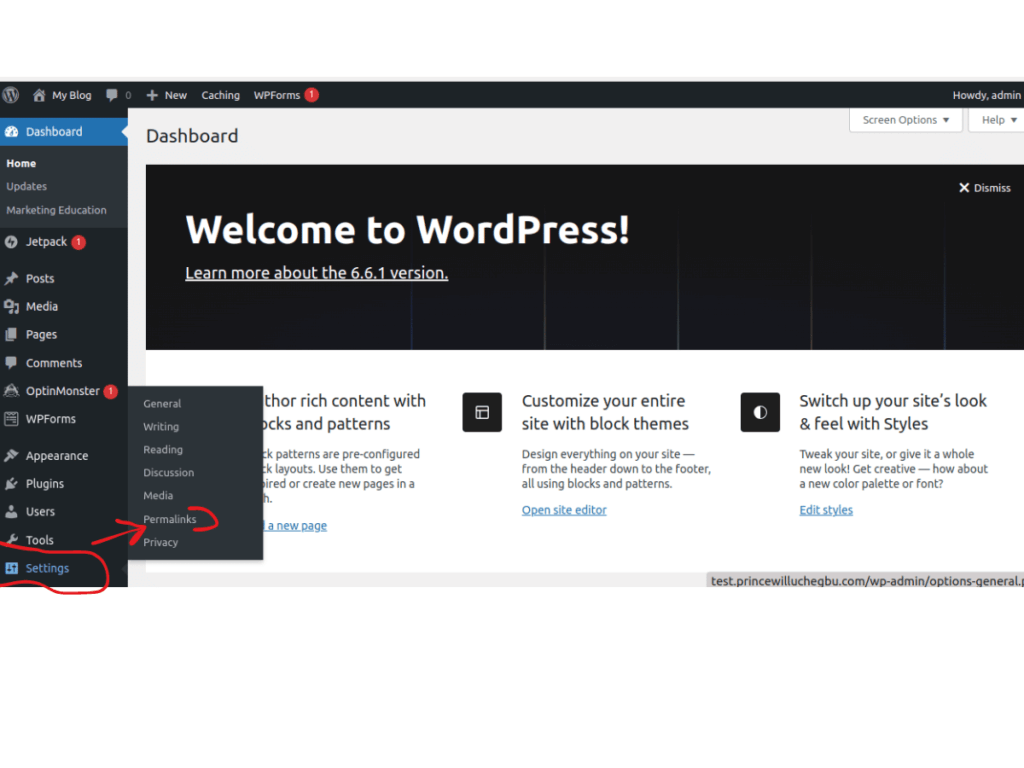
Then, choose Post name structure.
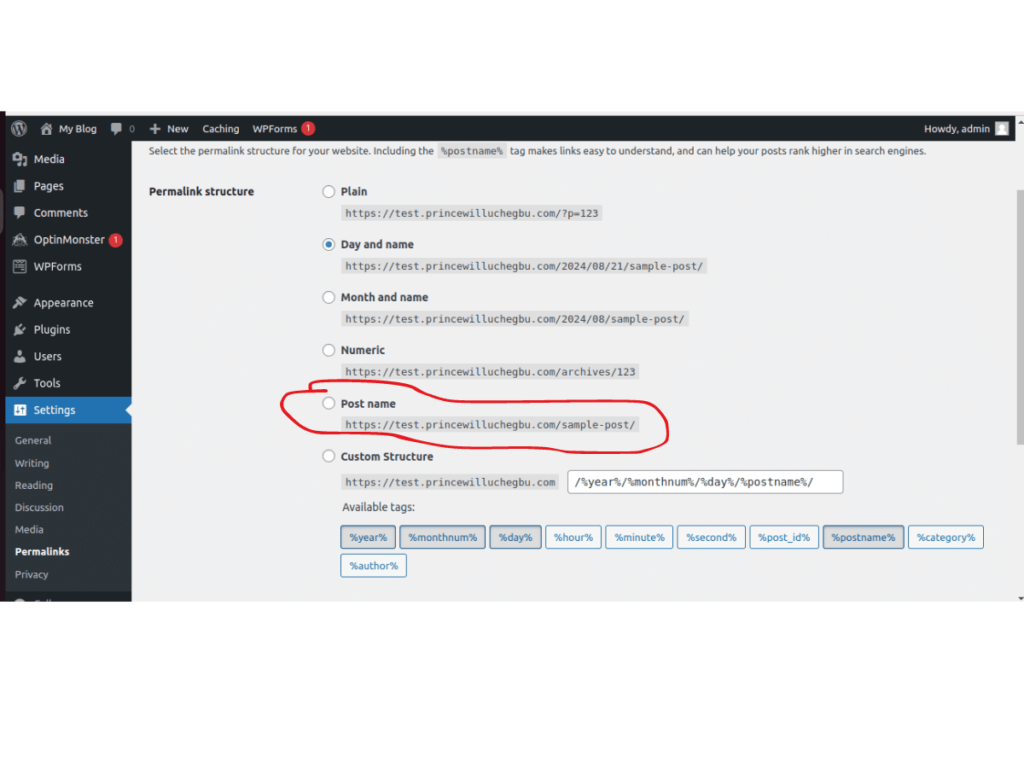
Scroll down, click “Save Changes.”
Next!
Make the homepage the default appearance page that users will see if they visit the domain by activating the “Your latest posts”.
To achieve that, go to Settings > Readings.
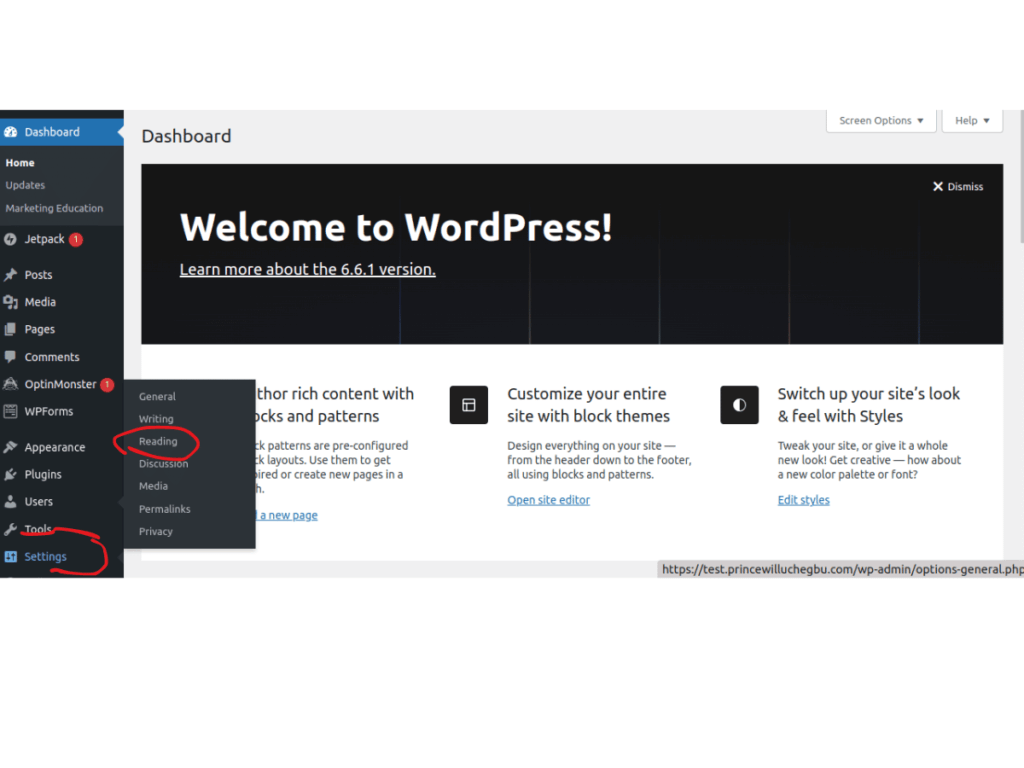
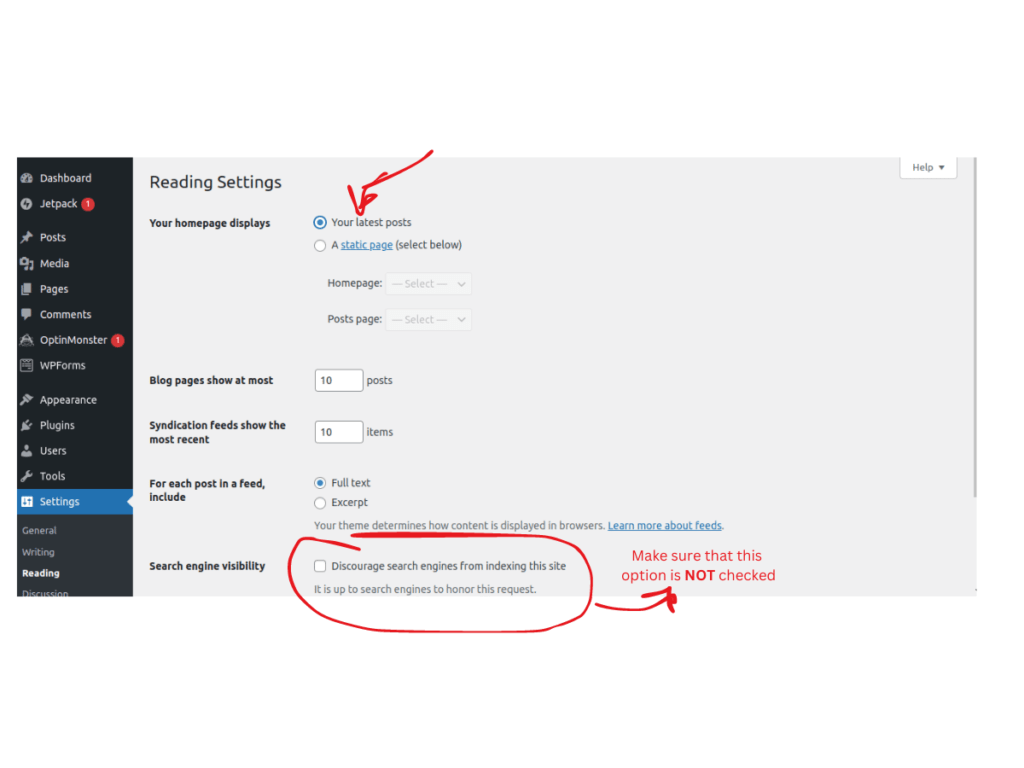
Select Your Latest Post as the homepage displays.
Having done all that, it’s time to build our relevant Pages and Categories.
Join Princewill Uchegbu’s Whatsapp Community to Interact and Receive Weekly Updates on Tips, Tricks, and Strategies for Business and Life. Click here to Join.
Building the Pages
The relevant pages are:
- About: where you tell your readers who you’re and why they should trust the information on your blog.
- Contact: A page to display your information for users who may want.to connect with you.
- Privacy policy: A page where you outline how your blog use the data it collects from users.
- Disclaimer: A page that clarifies the limitations, liability and responsibility of your blog content.
All these pages are essential, especially if you’re applying for Google AdSense.
To build these pages, hover to Pages on the left side.
Pages > New Page.
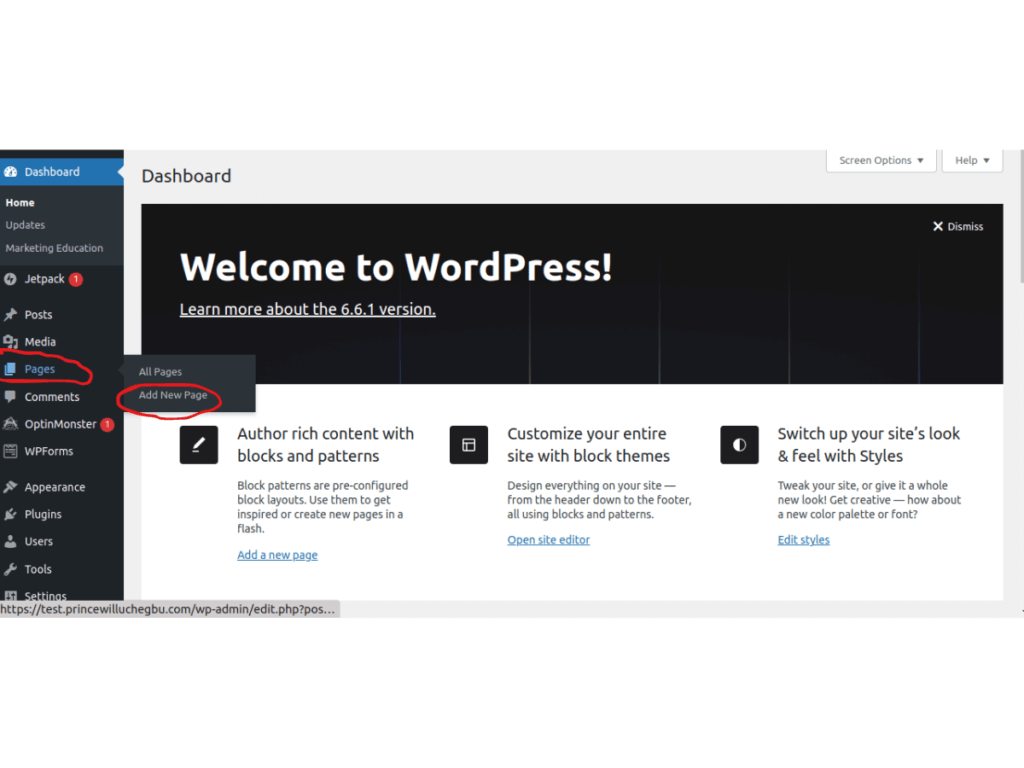
Then, Add title (either contact, about, disclaimer, etc).
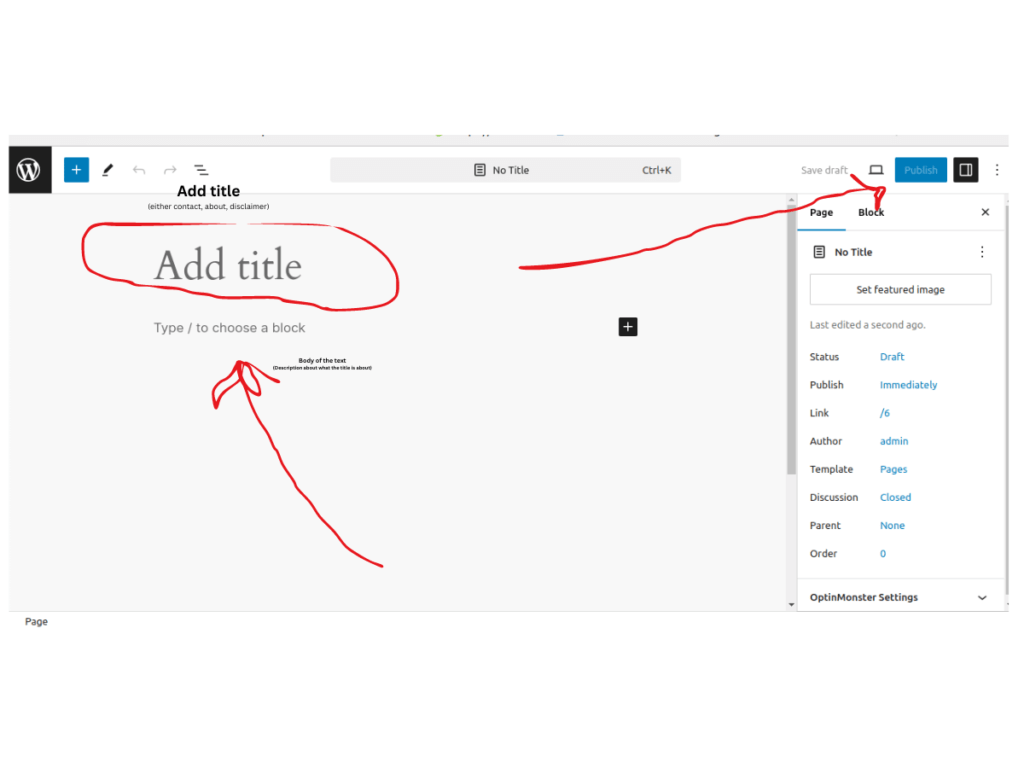
Type the content of the page.
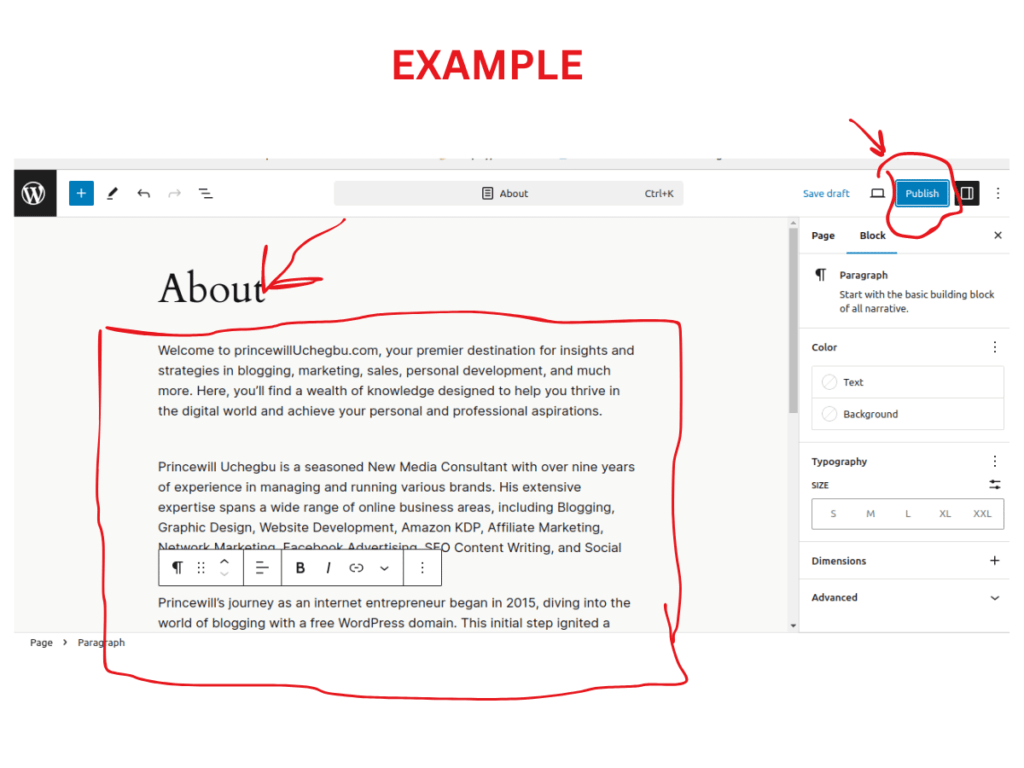
After that, click Publish.
Repeat the same process for the other pages.
Building the Category Pages
A category is a broad topic under which related posts are grouped. This helps organize content for easier navigation. For a beauty blog, categories might include:
- Skincare: Posts about skincare routines, tips, and product reviews.
- Example: “10 Best Moisturizers for Dry Skin”
2. Makeup: Tutorials, product reviews, and trends.
- Example: “Step-by-Step Guide to the Perfect Smokey Eye”
3. Haircare: Tips, routines, and styling ideas.
- Example: “Quick and Easy Hairstyles for Busy Mornings”
4. Nail Care: Nail art and maintenance tips.
- Example: “DIY Nail Art Ideas for Beginners”
These are just a few categories that you can have to help readers find content quickly and improve the blog’s structure and SEO.
You should be able to think of different categories for your blog.
To create a category, hover to Posts > Category.
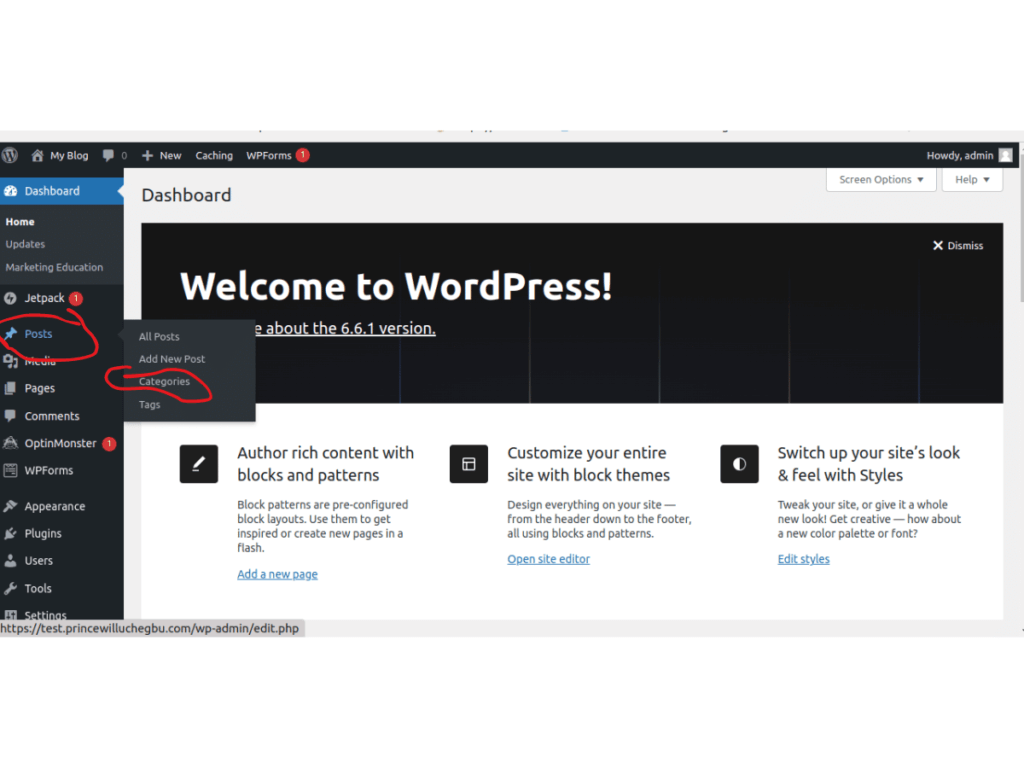
Then, give the category a name; repeat the name in the slug, then, choose if it’s a parent category or subcategory and, add description, if you want.
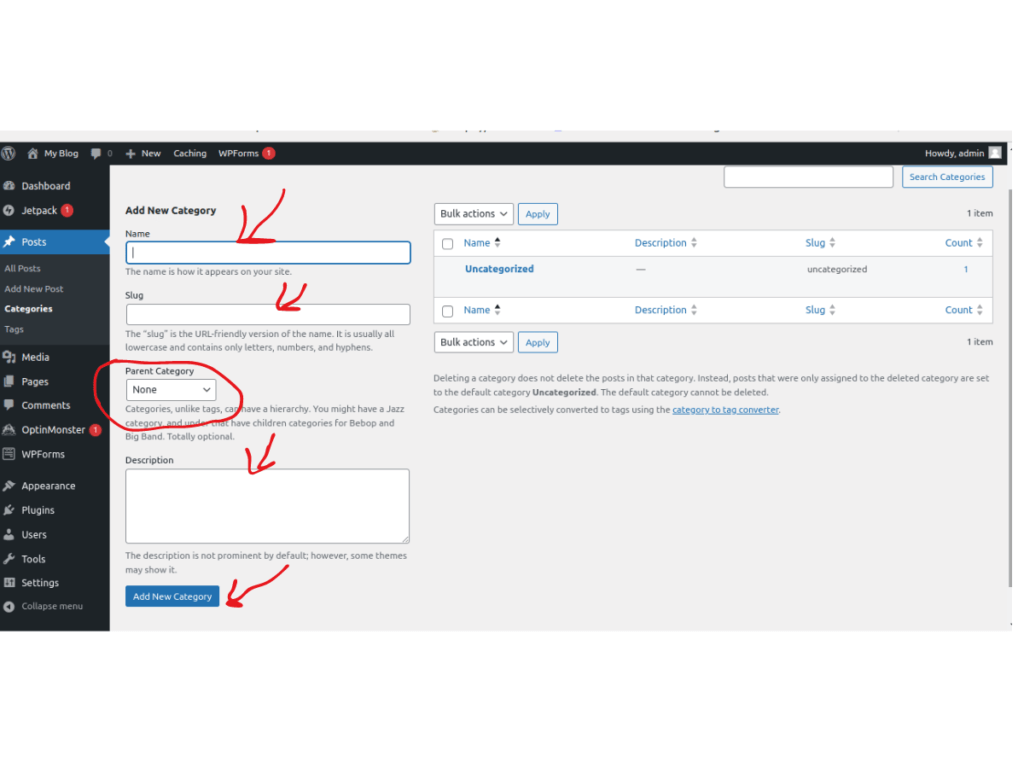
Repeat the process for all categories.
Writing your blog posts
Once you’ve designed your beauty blog, the next step is to start writing blog posts that your audience will find interesting.
If you’re an expert in the beauty niche, this should be easy since you likely know what people are interested in. However, to avoid guessing, I recommend brainstorming various topics and using a keyword research tool to validate them.
For instance, before writing blog posts, I brainstorm 30-90 topics I believe readers will be interested in, which I focus on for the next 30-90 days. This helps me stay focused while creating content.
Content writing isn’t always easy, but it becomes more manageable once you’ve planned it out.
After brainstorming, I use a keyword research tool to see if people are actually searching for these topics. My favorite tool is SEMRUSH. Go to SEMRUSH, use the keyword overview, and search for all the keywords.
The results will tell you whether to proceed with the topics you’ve brainstormed. The goal is to create not just helpful content, but content people are actively searching for.
As a rule of thumb, I recommend beginners start with topics that have a Keyword Difficulty (KD) of less than 20 and an average monthly search volume of 500. However, I may go above KD 20 or below 500 search volume depending on the relevance and the sites currently ranking on pages 1-5 of the Search Engine Results Pages.
Once the keyword is validated as searchable by your target audience, you can start producing the content.
Also, consider producing content in clusters—posts that are closely related to each other.
Done with the first blog post?
Go to Posts > Add New
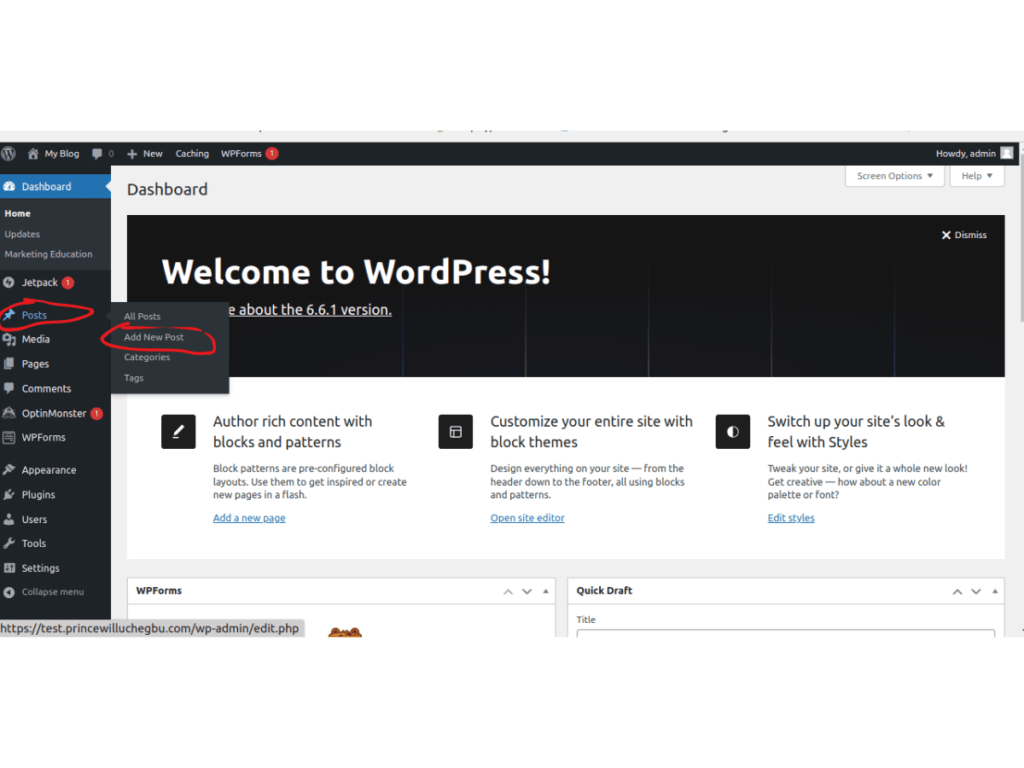
Add the post. Choose the right category. Click Publish, if everything is fine.
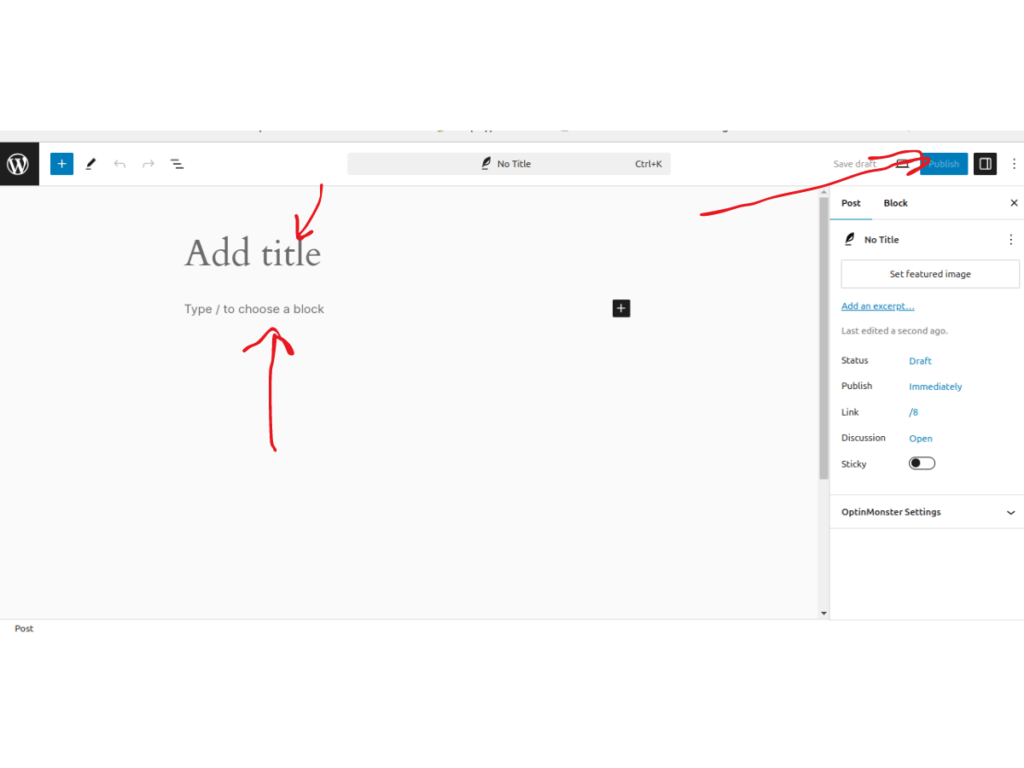
How to promote your beauty blog
Writing an interesting blog post is one thing; getting people to read it is another. No blog owner wants to write a post that only they will read.
So, when you hit the publish button, it’s your responsibility to drive traffic to your site beyond relying on search engines to discover and rank your content.
In my previous publication on How to Promote Your Blog, I detailed the most effective methods to attract readers as soon as you publish a post.
If you’re just starting and don’t have much to spend on paid ads, sharing an excerpt of your post on social media, forums, etc., is a good way to promote your blog. Plus via your email list if you’ve one.
Here’s how to do it:
- Create an excerpt, summary, or introduction for your recently published post and share it on the social media platforms you’re active on, with a link back to the full content. Instagram is particularly effective since beauty is all about visual appeal.
- You can also start a YouTube channel, although it’s more demanding, to promote your blog.
- Identify and join forum threads like Quora that discuss beauty-related topics. Engage in the discussions, and subtly promote your post by referencing it.
Make money with your beauty blog
There are many ways to make money from your beauty blog. However, regardless of the monetization method you choose, you need a significant number of visitors to generate substantial income.
The reason is simple: traffic equals money in blogging.
Whether you’re selling your products, promoting others’ products, or monetizing through ad networks like Google AdSense, you need visitors who will take actions that lead to revenue.
More visitors mean more money. I’ve also written an extensive guide on How To Make Money Blogging—check it out!
Here are methods to monetize your beauty blog:
- Create and sell your digital or physical products. This could include eBooks or video courses on beauty tips and tricks.
Pro Tip: Book a one-on-one 7-day Product Creation and Monetization Masterclass. Learn to create your digital product in 7 days and make a significant profit from it. We’ll jump on a call for 7 days, researching and fine-tuning your offer to appeal to your target audience.
2. Become an affiliate and promote relevant products. Many beauty brands offer affiliate programs where you can earn commissions by promoting their products. If someone buys a $100 product through your affiliate link and the commission is 50%, you earn $50.
3. Offer your skills as a service. Provide consultation or other services based on your expertise that your readers are interested in.
4. Join display ad networks. Apply for Google AdSense or use ad networks like Monetag and Adsterra, which have less strict approval policies. You’ll earn money as visitors interact with the ads displayed on your blog.
FAQ | How to Start a Beauty Blog
How Do I Start My Beauty Blog?
To start a beauty blog, follow these steps:
1. Choose a niche within the beauty industry. Focusing on a specific niche will help you scale quickly.
2. Choose a name that reflects your blog’s content and register it as a domain name.
3. Register the domain, buy a hosting account, and build the site using WordPress or another CMS.
4. Start writing and sharing your blog posts.
5. Monetize the blog using the strategies I’ve discussed.
Can You Make Money with a Beauty Blog?
Yes, you can make money with a beauty blog through various monetization methods:
2. Affiliate Marketing: Promote beauty products and earn a commission for each sale made through your referral links.
2. Sponsored Posts: Brands may pay you to write posts featuring their products.
3. Ad Revenue: Earn money by displaying ads on your blog using services like Google AdSense.
4. Selling Products or Services: Sell your own beauty products, digital products (like eBooks), or offer services like consultations.
How Long Should a Beauty Blog Be?
The length of your blog posts can vary depending on the topic:
1. Short-Form Content (300-800 Words): Ideal for quick tips, product reviews, and announcements.
2. Medium-Form Content (800-1,500 Words): Suitable for detailed tutorials, how-to guides, and listicles.
3. Long-Form Content (1,500+ Words): Best for in-depth guides, comprehensive reviews, and extensive pillar content.
How Do You Write a Beautiful Blog?
Write in a conversational tone, share personal experiences, and include actionable tips. Use first-person pronouns to make it feel like you’re talking directly to one person.
What Does a Beauty Blogger Do?
They talk about various topics, share ideas, opinions, and provide solutions to issues people search for online.
What Should I Consider When Choosing a Niche for My Beauty Blog?
Consider popularity, your expertise, and whether the niche has a substantial audience. Avoid niches you know little about unless you can validate your content with expert input.
How Do I Choose a Name and Domain for My Beauty Blog?
Choose a short, easy-to-spell name that reflects your blog’s content. Include relevant keywords, like “beauty,” to make it easy for users to understand what your blog is about.
How Do I Register My Domain Name?
Check domain availability through a registrar like Bluehost. If your preferred name is taken, consider alternative extensions or variations of the name.
What Hosting Provider Should I Use for My Beauty Blog?
Choose a reliable hosting provider. Recommended options include Bluehost and Minty. Ensure the provider offers good support and performance.
How Do I Build My Beauty Blog Using WordPress?
Install WordPress via your hosting account’s cPanel, select a theme, customize your blog, and create essential pages like About, Contact, Privacy Policy, and Disclaimer.
How Can I Promote My Beauty Blog Effectively?
Share excerpts on social media, start a YouTube channel, and engage in forums related to beauty. Drive traffic beyond search engines to reach a wider audience.
Final Thoughts
To become a successful blogger, you should focuse on having a content calendar that guides you toward producing high-quality content. Share makeup tips, self makeup tutorial review skincare products, follow popular beauty bloggers or beauty influencers to know the beauty trends.
Below are additional aspects of blogging that you can master to up your game:
1. Email marketing: You should be a ble to set up a simple email system using the available email systems. I encourage you to use Systeme.io as their applications are very easy to navigate and master. Plus, they’ve a certification course that will teach you everything about using their system.
2. Affiliate Marketing: This a golden opportunity to earn money through affiliate programs by recommending promoting other people’s products and services.
3. Have a content strategy. A content strategy allows you to understand your target audience and to produce more high quality content at ease. When publishing, also source for high quality images
Lastly, if you’ve enough dough to invest, hire the service of an SEO expert. The expert will be in charge of the Search Engine Optimization (SEO Optimization) so you can focus more on producing authentic content. This person will also be in control of the Google Analytics and help you to understand how your content is performing.

